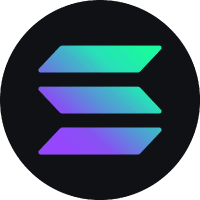![Quickswap [New] Kurs](https://img.bgstatic.com/multiLang/coinPriceLogo/23e5466969665fe7482af6bb112992ac1710263425091.png)
Quickswap [New] KursQUICK
QUICK/EUR Kursrechner
Live Quickswap [New] Kurs heute in EUR
Glauben Sie, dass der Kurs von Quickswap [New] heute steigen oder fallen wird?
Quickswap [New] Marktinformationen
Über Quickswap [New] (QUICK)
Quickswap: Der aufstrebende Stern im Kryptowährungsraum
QuickSwap ist eine dezentralisierte Austauschplattform, die auf dem Ethereum-basierten Layer 2, Polygon (ehemals Matic Network), erstellt wurde.
Was ist Quickswap?
Quickswap ist ein Protokoll für den dezentralisierten Austausch von Kryptowährungstoken auf Polygon. Es wurde inspiriert durch Uniswap und teilt somit viele seiner Funktionen, aber ist innovativ in seinem Streben nach schneller, effizienter und günstiger Blockchain-Interaktion.
Warum ist Quickswap wichtig?
Die Notwendigkeit für Quickswap wurde durch die vielfältigen Probleme deutlich, die derzeit mit Ethereum und seinen Transaktionskosten verbunden sind. Sobald ein Nutzer eine Transaktion auf Ethereum durchführen möchte, fällt eine sogenannte Gasgebühr an. Diese Gebühren sind in der letzten Zeit aufgrund des enormen Nutzerzuwachses und der begrenzten Skalierbarkeit von Ethereum stark angestiegen.
Quickswap löst dieses Problem, indem es auf Polygon läuft - einem Layer-2-Netzwerk, das parallel zu Ethereum arbeitet. Durch die Nutzung von Polygon kann Quickswap Transaktionen weit schneller und zu einem Bruchteil der Kosten von Ethereum verarbeiten. Dadurch kann jeder, unabhängig von seinem Einkommen oder Standort, weiterhin am dezentralisierten Austausch teilnehmen.
Schlüsselfunktionen von Quickswap
Geschwindigkeit und Effizienz
Da Quickswap auf Polygon läuft, profitiert die Plattform von einer schnelleren Transaktionsverarbeitung und niedrigeren Gebühren. Nutzer müssen nicht länger auf langsame Transaktionen warten oder hohe Gasgebühren zahlen.
Native Token
Quickswap hat auch seinen eigenen nativen Token - QUICK. Dieser Token hat mehrere Zwecke innerhalb des Quickswap-Ökosystems, einschließlich der Bereitstellung von Liquidität und dem Erhalt von Transaktionsgebühren.
Liquiditätspools
Wie bei anderen dezentralisierten Börsen können Nutzer auf Quickswap Liquiditätspools beitreten, um passives Einkommen zu erzielen. Nutzer können ihre TOKEN in Liquiditätspools einzahlen und im Gegenzug Pool-Token erhalten, die sie jederzeit einlösen können.
Fazit
Quickswap revolutioniert den DeFi-Bereich durch seine innovativen Lösungen für die aktuellen Probleme. Mit seiner hohen Geschwindigkeit, niedrigen Gebühren und benutzerfreundlichen Oberfläche ermöglicht Quickswap es jedem, die Vorteile des dezentralisierten Austausches zu nutzen. Es bleibt spannend zu beobachten, wie sich Quickswap und die gesamte DeFi-Welt in den kommenden Jahren weiterentwickeln werden.
AI-Analysebericht über Quickswap [New]
Quickswap [New] Kursverlauf (EUR)
 Niedrigster Kurs
Niedrigster Kurs Höchster Kurs
Höchster Kurs 
Was ist der höchste Kurs von Quickswap [New]?
Was ist der niedrigste Kurs von Quickswap [New]?
Quickswap [New] Kursprognose
Wann ist ein guter Zeitpunkt, um QUICK zu kaufen? Sollte ich QUICK jetzt kaufen oder verkaufen?
Wie hoch wird der Kurs von QUICK in 2026 sein?
Wie hoch wird der Kurs von QUICK in 2031 sein?
Trendige Aktionen
Globale Quickswap [New] Kurse
Wie man Quickswap [New](QUICK) kauft

Erstellen Sie Ihr kostenloses Bitget-Konto

Verifizieren Sie Ihr Konto

QUICK in EUR konvertieren
FAQ
Was ist der aktuelle Kurs von Quickswap [New]?
Wie hoch ist das 24-Stunden-Trading-Volumen von Quickswap [New]?
Was ist das Allzeithoch von Quickswap [New]?
Kann ich Quickswap [New] auf Bitget kaufen?
Kann ich mit Investitionen in Quickswap [New] ein regelmäßiges Einkommen erzielen?
Wo kann ich Quickswap [New] mit der niedrigsten Gebühr kaufen?
Kurse ähnlicher Kryptowährungen
Wo kann ich Quickswap [New] (QUICK) kaufen?
Videobereich - schnelle Verifizierung, schnelles Trading

QUICK/EUR Kursrechner
QUICK Ressourcen
Bitget Insights

Traden
Earn
QUICK/USDT
SpotQUICK/USDT
MarginQUICK/USDT
USDT-M Futures







